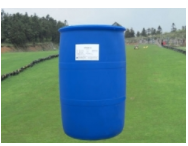Surfactant is a kind of material which can reduce the interfacial tension of liquid, solid-liquid and gas-liquid. It has the functions of solubilization, emulsification and wetting. It can dissolve those insoluble petroleum hydrocarbons and other organic compounds, so as to improve the desorption efficiency of organic pollutants in soil. The surface active molecules are amphiphilic, that is, the hydrophilic group composed of hydrophilic group and lipophilic group makes the surface active molecules soluble in water, while the lipophilic group makes the surface active molecules soluble in oil phase gasoline, kerosene, animal and vegetable oil, various fat channels, aromatic compounds and some liquid organics which are not soluble in water. Chinese style
Generally speaking, hydrophobic petroleum diameter materials will be tightly adsorbed on the surface of soil particles, and even occupy a part of soil pores, so it is difficult for microorganisms to contact with them to have effective biodegradation. The human part of microorganism exists in the water phase of soil. Therefore, it is an important way to increase the bioavailability and final treatment effect of pollutants by desorption of petroleum pollutants from soil particles into the water phase of soil to increase the contact area between pollutants and microorganisms.

Bioavailability of pollutants refers to the amount of pollutants in the soil or groundwater environment that can be used or degraded by microorganisms. A kind of
Influencing factors: hydrophobicity of pollutants, adsorption of soil particles and shielding rejection.
1. Hydrophobicity of pollutants.
Low water-soluble substances form an independent non-aqueous phase, which can not be directly used by microorganisms, and this non-aqueous phase is prone to biological toxicity. A kind of
2. Adsorption of soil particles.
Hydrophobic pollutants are also easy to be adsorbed by soil particles, but the adsorbed pollutants are usually difficult to be utilized by microorganisms, so when the time required for desorption exceeds the time required for degradation, the desorption rate becomes the speed limiting step of the whole reaction. A kind of
3. Shielding rejection.
The longer the soil is polluted, the more difficult it is to be repaired. This is because with the extension of the pollution time, the pollutants are gradually dispersed into some tiny soil pores. The internal pores of these pores are smaller than the length of trifoliate orange of common soil microorganisms, which blocks the entry of microorganisms and reduces the bioavailability of pollutants. A kind of
Other factors include the distribution characteristics of pollutants, the initial concentration, the distribution of soil particles and the content of organic matter.